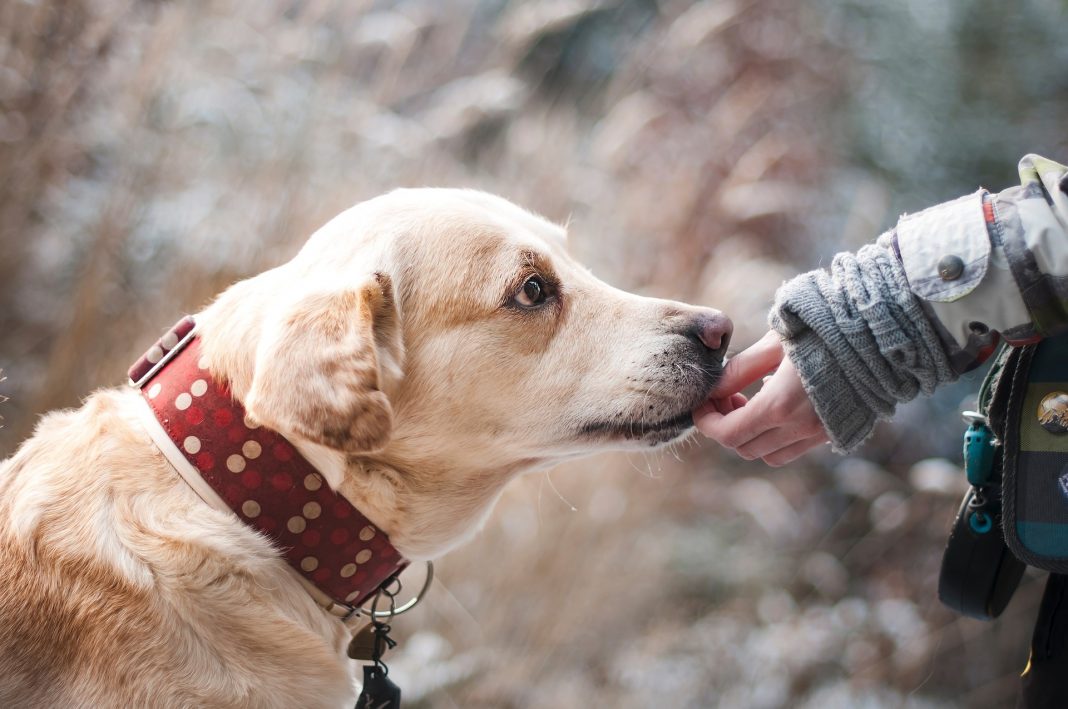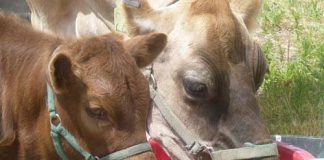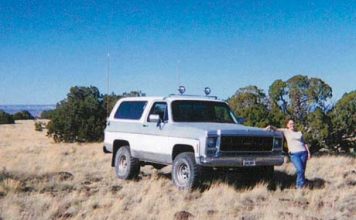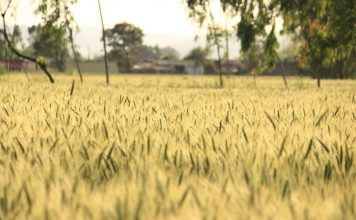 |
|
| Issue #63 • May/June, 2000 |
When you’re looking for a dog to fit into your country life, there are few other topics as liable to get you into a fistfight. People get very sensitive about their dog, its breed, or its characteristicsmore so, even, than they do about their own kids. After all, your kids were just bornwith the dog, you made a choice. The kind of dog you have says a lot about who you are.
All right. With the sensitive part out of the way, we can get down to business.
What kind of dog is the best for a country home? As with nearly every other rural subject, it depends…in this case, on five crucial factors: work or pet? size and coat? temperament? kids? costs and benefits? We’ll look at these one at a time.
Working dog or pet?
Contrary to popular opinion, the first decision about a country dog shouldn’t be “what breed?” It should be what the dog’s purpose will be. Either the dog will be a buddy and family pet, or it will be a working partner. Here’s the difference: a pet dog fulfills your feelings and usually lives in the house. A working dog performs a valuable function and has his own house or kennel outside. A working dog can also be a pet…but a pet might have a hard time doing useful work.
Working breeds have been bred for generations to perform a particular task. They don’t need much encouragement or training. They do their work because they love it, and because every fiber of their being requires them to do it. Typical working dog breeds include Great Pyrenees (large livestock guardian), Border collies and blue heelers (medium sized herding dogs), Labrador retrievers (large game-retrieving dogs), or foxhounds (hunting dogs). These kinds of dogs would be expected to perform specific tasks, either around the clock like the guardians, or on-demand like the Border collies and hounds.
 Left: A happy “pet” dog½ pug and ½ dachshund a funny, small, lively dog.> Right, top: A “pet” collie dog. He’s an outside dog, but his only job is to play with school-age kids. Right, bottom: A “working” watch dog½ Great Pyrenees and ½ Newfoundland. This 10-week old puppy already weighs over 50 poundshe’s going to be over 100 pounds at maturity. He has been swimming in a muddy pond. These breed combinations result in dogs that literally “bark all night long”keeping predators and strangers away. |
But in a backwoods setting, other “working” dogs might also fit the bill. What function do you wish the dog to accomplish? Pulling a cart loaded
with firewood (St. Bernard or Newfoundland), or pulling a sled in cold weather (husky or Samoyed), or aggressively barking at strangers (German shepherd or rottweiler), or friendly greeting of strangers (golden retriever), or watching the kids (collie), or even keeping the mice down in the barn (terriers)? There are breeds for every task.
Pet dogs, to my mind anyway, are animals whose basic skill is to pal up with people. Pets can also be adequate “bark at strangers” dogs, but since their primary orientation is to “be friends” with humans, they’re not as serious at this as are more aggressive guardian dogs.
A dog is principally a pet when its “occupation” is to hang around, play with the kids, lay near the fireplace, take walks, or be a companion. Pets can be trained to perform some duties such as herding or guarding, but their heart won’t be in it. A pet will do what you ask because it wants to please you, not because it wants to or has a natural inclination to do it. Pets won’t be able to do any task as well as a dog that has been bred for generations for a particular job.
Breeds that make good pets include: pugs, Yorkshire terriers, cocker spaniels, basset hounds, Lhasas, poodles, and shelties. Pets tend to be small-to-medium sized and really require daily contact, petting, and company.
Now, after determining the dog’s potential job…
Size and coat
Once you’ve narrowed down your dog choices to pet or worker, you’ll want to consider the animal’s full-grown size, which means looking at some factors in your surroundings, as well as the dog’s future “job.” If the dog will be around your children, you’ll probably find a medium-sized dog ideal, big enough to tolerate
 Young “working” Border collie dogs in their outdoor run and weather-proof dog house (recycled plastic barrel). Inset: A “working” Anatolian livestock guardian dog. This dog stays with Angora goats outdoors year-round, chasing away predators and human strangers. |
the kid’s hair pulling and sitting on it, but not so big that one swipe of its tail knocks somebody down. If the dog will be expected to intimidate strangers, a bigger dog with a loud bark would be best. If the dog is just supposed to keep you company while you work at the computer, then even a small quiet curl-up-in-your-lap could be the choice.
Along with size, the length and composition of the dog’s coat needs to be considered. Dogs with beautiful thick, long coats tolerate the cold very well but really suffer in the heat; they may need to be trimmed if they seem to be overhot. On the other hand, very short-coated dogs can’t take ice, snow, or extreme winds, but they cool off quickly in hot weather. If you expect to work a long-coated dog during the summer, make sure it does get that trimming, but be alert to the fact that it simply may not be able to stand the heat very well, trimmed or not. A short-coated dog will need extra bedding and wind protection in its doghouse during the winter months.
Size and coat considerations lead naturally into…
Temperament
By this I mean three factors: aggressiveness, energy level, and tolerance of stress. Aggressive dogs come in big, medium, and small sizes. But if your goal is a pet for your two-year-old, aggressiveness should be at the bottom of your list of desired traits. Aggressive dogs are confident, assertive, quarrelsome, willing to fight, willing to bite when needed, and tend to be stubborn and harder to train. Unaggressive dogs “just want to get along.” They like everybody and will take a one-down position to even the youngest member of the family. Unaggressive is quite different than “shy,” by the way. A shy dog is actually an afraid or fearful animal and may be a snappy biter when put in a stressful situation.
With energy-level, dogs are like people: some are real balls of fire, full of pep, ready to run and play at a moment’s notice (terriers fit this description); others are lackadaisical and prefer to turn into couch potatoes (basset hounds enjoy a good snooze). If you’re a ball of fire, make sure your dog is one, too, or the dog will refuse to go out in the rain with you when work needs to be done. And if you’re a low-key kind of person, content to spend all your time in deep thought, a high-energy dog like a dachshund will aggravate you with its constant demands for attention and “walkies.”
Tolerance of stress is a measure of the dog’s capacity to endure change, noise, confusion, and erratic schedules. This trait is as individual in dogs as it is in people. Some breeds seem better able to tolerate stress, but individual dogs within breeds might or might not take it well. If you’re looking at puppies, one way to determine if a dog can tolerate stress is to clap your hands suddenly. Pups that scurry to cover are more sensitive to noise and may be more sensitive to stress than the pup that stops and looks at you to see what’s going on.
Kids
The presence of children in the household makes a major difference in the types of dogs you’d want around. When our kids were little, the only dogs we had were Lassie-type collies and collie-crossbreds. Like TV’s Lassie, these dogs are bright, alert, but very tolerant and protective toward “small things.” One of our old collie girls even adopted a litter of abandoned kittens, nursing and washing them as well as any cat could have until they were old enough to find new homes.
I’ve been horrified to speak to people who wanted to get a “kid’s dog,” but were looking at Chihuahuas. Chi’s are small, all right, but they have a snappy temperament and don’t tolerate a lot of childish mauling very well. Plus, a Chi at seven pounds could be squashed, unintentionally, by a heavy child sitting down on it.
 A “working” foxhound dog, eager to find a raccoon. This large outside dog has a loud, baying bark and wants only to sniff and hunt. |
In general, friendly, even-tempered, medium-sized, sturdy, and medium-coated dogs make the best kid-dogs, and lots of people remember that mixed-breed muttley dog that was their best-friend so many years ago. Mutts often make excellent kid dogs.
If you’re planning to keep a dog for work and not as a companion, the kids won’t understandI guarantee it. Hard working dogs, like Border collies, will prefer to herd rather than play anyway, but the kids won’t understand that either. A compromise that will satisfy all involved: working dog for the task, pet dog for the kids. The worker stays outside in its kennel when not “at work,” the pet sleeps in the kids’ room, probably right on their beds. The kids will understand this arrangement.
Costs and benefits
How much is a good friend worth to you? A friend who would sacrifice his life for yours, one who stays with you through good and bad, who never complains, who only wants to remain at your side no matter where you go or what you do? That’s what a pet dog returns over time, all in exchange for a pound of kibble a day and some basic veterinary care.
A working dog, however, can take the place of another human by moving livestock or guarding a portion of your land. If a working dog saves two or three sheep a year from predators, it has paid for itself. If it keeps bad guys from jumping your fence and making off with your VCR, it has bought all its own dog food for a year. If it swims out to collect your shotgunned ducks, it saves you from cold and damp and helps you keep your eyes on the flying birds.
 Bruce and JamieBruce is ½ collie a good “kid’s” dog. |
A purebred registerable dog of any breed, as a pup, will set you back $300 plus. Spend much less than that and you can be pretty sure it’s not from a quality line. A purebred dog that is unregisterable (no papers) will run half or a fourth as much as a papered purebred. No papers may mean there’s a little something not purebred in its ancestryperhaps an unintentional outbreedingbut these dogs resemble pure dogs of their breed and often have the benefit of a little outcrossing to strengthen their health and temperament.
A pup should have had its first shots and been dewormed when you acquire it. It will still need two more routine immunizations and at six months it should have a rabies vaccine. After that, once-a-year boosters should prevent most communicable diseases, and twice-annual dewormings will keep the internal parasites in control. If you don’t mind giving your own shots, “5-way” or “6-way” vaccines run about $3 per dose. In most states, a rabies vaccine needs to be administered by a vet and typically runs $6 to $12.
Adult dogs of nearly every breed can be found at animal shelters nationwide. Typically, the cost will be $50 to $75, and that will include license, shots, and spaying or neutering.
To spay/neuter is a question that most people don’t think much about. We have been convinced by our social controllers that dogs are better off being “fixed.” However, somebody’s got to breed dogs. It’s a topic that is too detailed to cover in this article, but a family that keeps purebred male and female dogs of the same breed, either as pets or workers, and breeds them once a year, can pay for the dog’s food, and then some, from the sale of pups.
If this sounds like an option for you, be especially discriminating in choosing your breeding pair. Get unrelated dogs from different ancestry of the same breed (ask to see the pedigree before purchasing), have them carefully health-screened, learn everything you can about the breed, and plan on keeping these dogs for the long haul. Your dogs can easily last 12 to 15 years, long past their reproductive potential. You might not be able to sell all the pups and wind up with extras to support. If this seems like too much effort, then this probably isn’t an option for you.
I would also caution against prematurely spaying or neutering your dog. With a little sensibility, you can prevent unwanted breedings. It isn’t uncommon to realize you want puppies out of your dog after it is three or four years old. If the dog’s already been fixed, you’re out of luck.
A caution
People often buy a dog to fit an image, a picture of what they think country living is like, or what they think will look good, or a dog that builds their own self-esteem. It’s hard to get past these ideas, but sorting out your reasons for having a dog can help counteract the image problem and will provide you with a dog that truly fits your needs, not just your imagination.
There are fine dogs in every breed and among the world of mutts. Your local library probably has an encyclopedia of breeds that describes traits and characteristics. That’s a good place to start. A few visits to the local animal shelter will also indicate what breeds and crossbreeds are typical in your area, give you an idea of full-grown sizes for various breeds, and introduce you to some very nice people who volunteer there.
Then, you can know with confidence what the “best” dog for your part of the country will be.














